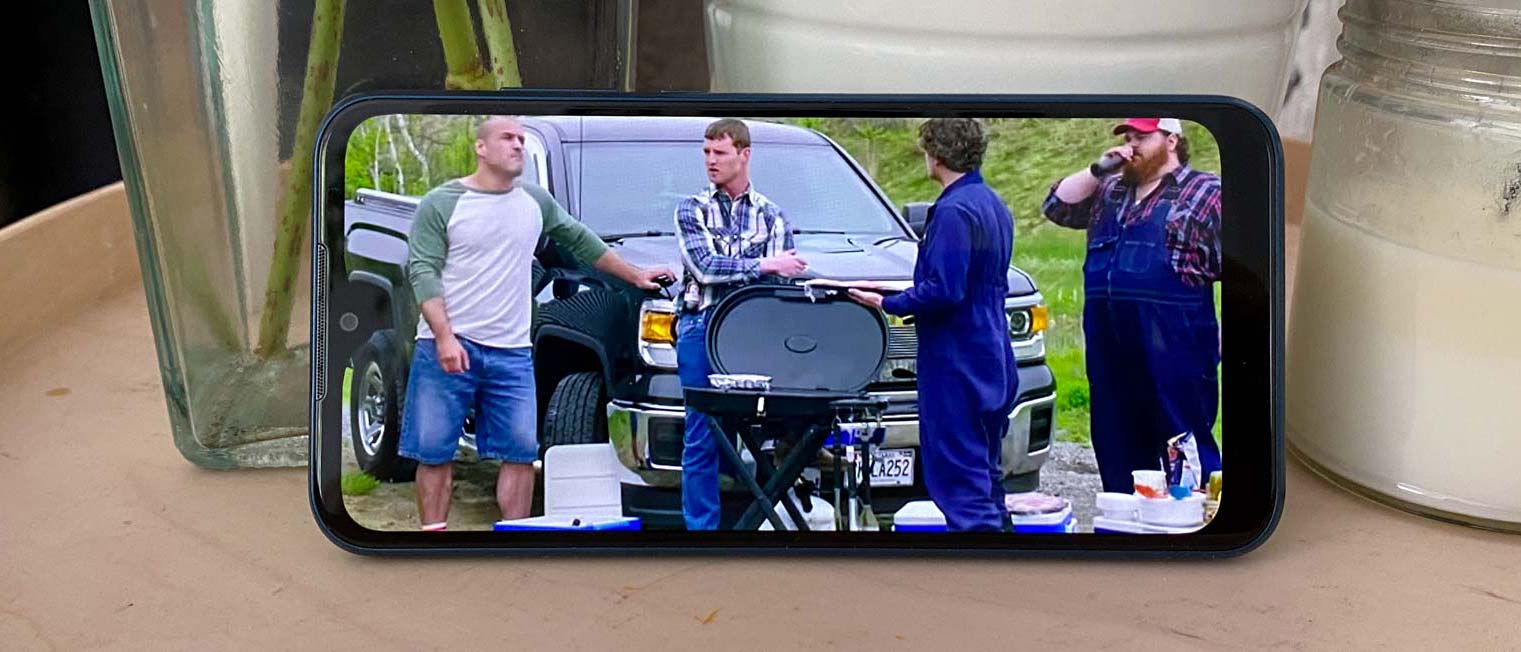Tom's Guide Verdict
The Moto E gives you a basic smartphone for $149 that’s capable of taking good photos. But if you can spend a little extra, opt for the Moto G Fast or Moto G Power instead, as they deliver better value.
Pros
- +
Excellent portrait shots
- +
Above average battery life
- +
Low cost
Cons
- -
Not a lot of processing power
- -
Dark display
- -
No planned updates past Android 10
Why you can trust Tom's Guide
In many ways, the Moto E 2020 is at the heart of Motorola's approach to smartphones. This 7th generation of Motorola's entry level handset is Motorola's latest attempt to give budget phone buyers a low-cost option that still delivers on the key basics.
Price: $149
Screen size: 6.4-inch LCD (1520x720)
CPU: Snapdragon 632
RAM: 2GB
Storage: 32GB
microSD: Yes, up to 512GB
Rear cameras: 13MP main (f/2.0); 2MP depth sensor (f/2.2)
Front camera: 5MP (f/2.0)
Battery size: 3,550 mAh
Battery life (Hrs:Mins): 10:14
Size: 6.3 x 3 x 0.34 inches
Weight: 6.5 ounces
Color: Midnight Blue
But a lot has happened since last year's Moto E6. In that time, Motorola has dabbled with the foldable Motorola Razr, introduced a series of speciality phones with the different Moto One models and even gotten back into the flagship game with the Motorola Edge Plus. You have to wonder if Motorola's focus is on something other than the Moto E lineup, especially at a time when the low-cost Moto G lineup has produced the long-last Moto G Power, the intriguing Moto G Stylus and now the Moto G Fast.
With Moto G phones ranging in price from $199 to $299, you have to wonder if there's still any room for the Moto E among the best cheap phones. Our Moto E review has found a capable budget device that will appeal to anyone who hates to spend more than $200 on a smartphone. But there's nothing about the Moto E that stands out, especially when a few dollars more will get you a better phone in the form of the Moto G Power.
Moto E review: Price and release date
The Moto E costs $149 and goes on sale June 12. The Moto E is $50 cheaper than the Moto G Fast, which offers features a faster processor, additional cameras and longer battery life. The Moto E is also $100 cheaper than the $249 Moto G Power and $150 less than the $299 Moto G Stylus.
Pre-orders are already underway for the Moto E, which hits stores unlocked on June 12 at Best Buy, B&H Photo, Walmart, Amazon and Motorola's own website. Carriers offering the Moto E will include T-Mobile, Metro by T-Mobile, Boost Mobile, U.S. Cellular, Consumer Cellular, Xfinity Mobile and Republic Wireless. Verizon will also offer the Moto E through its prepaid service.
Moto E review: Design
You're not going to fool anyone into thinking you've paid more than $150 for your phone with the Moto E. It's not that the phone looks unattractive, but the plastic materials, blocky edges and overall appearance confirms that it’s a budget phone.
Even though the Moto E uses a teardrop notch to house its front camera, there's still a noticeable bezel at the top and along the sides of the phone. There's a pretty thick bezel along the bottom, too — not iPhone SE-thick but prominent enough to stand out even among budget phones sporting more expansive displays.
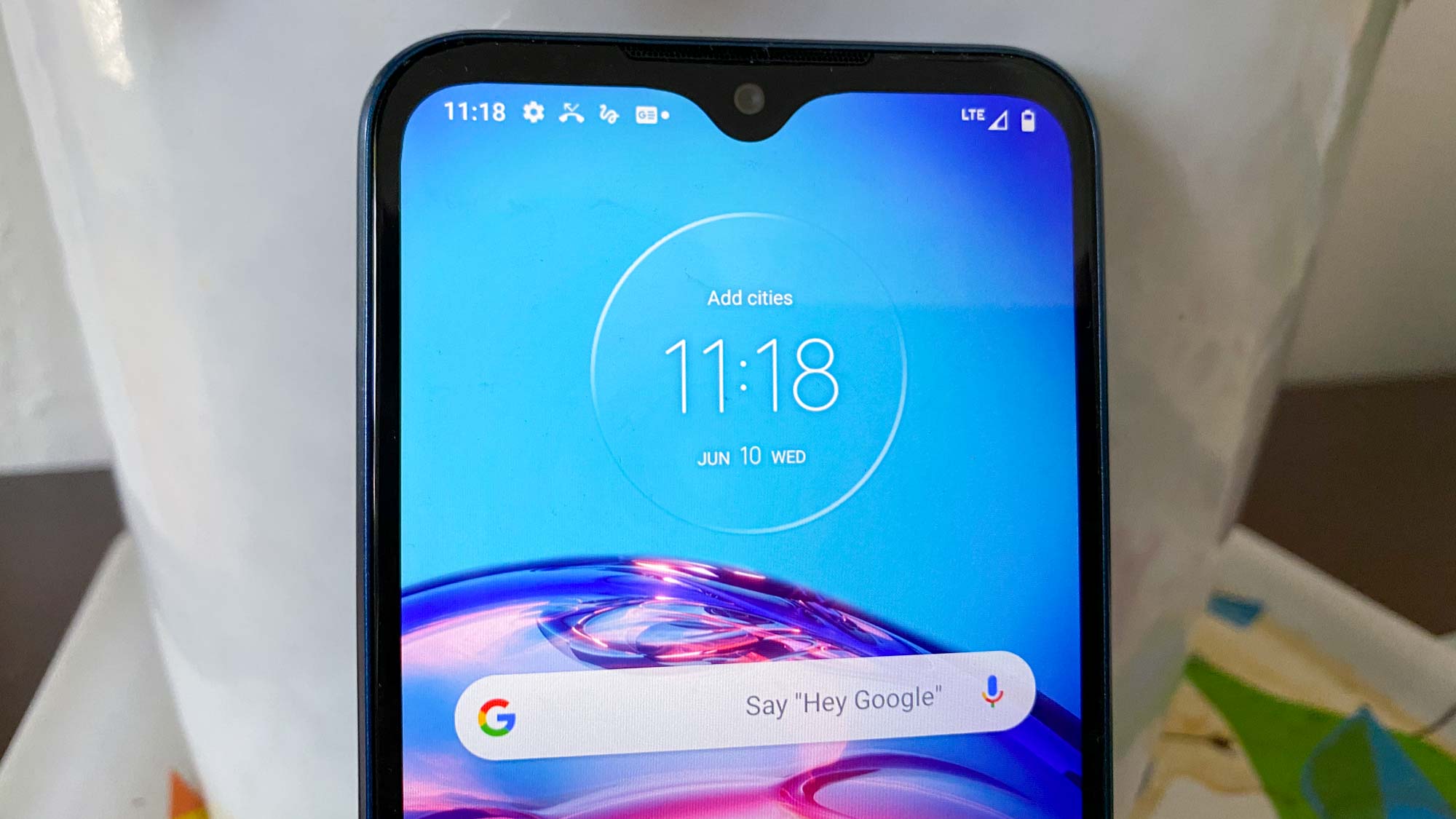
At 6.3 x 3 x 0.34 inches, the Moto E isn't that much taller and wider than comparable phones. It's roughly the same size as the 6.4 x 3 x 0.33 inches and noticeably thinner than the Moto G Power, which has to accommodate a much bigger battery. While the Moto E felt weighty in my hand, the 6.5 ounce phone is only 0.2 ounces lighter than the TCL 10L, which struck me as a fairly light handset.
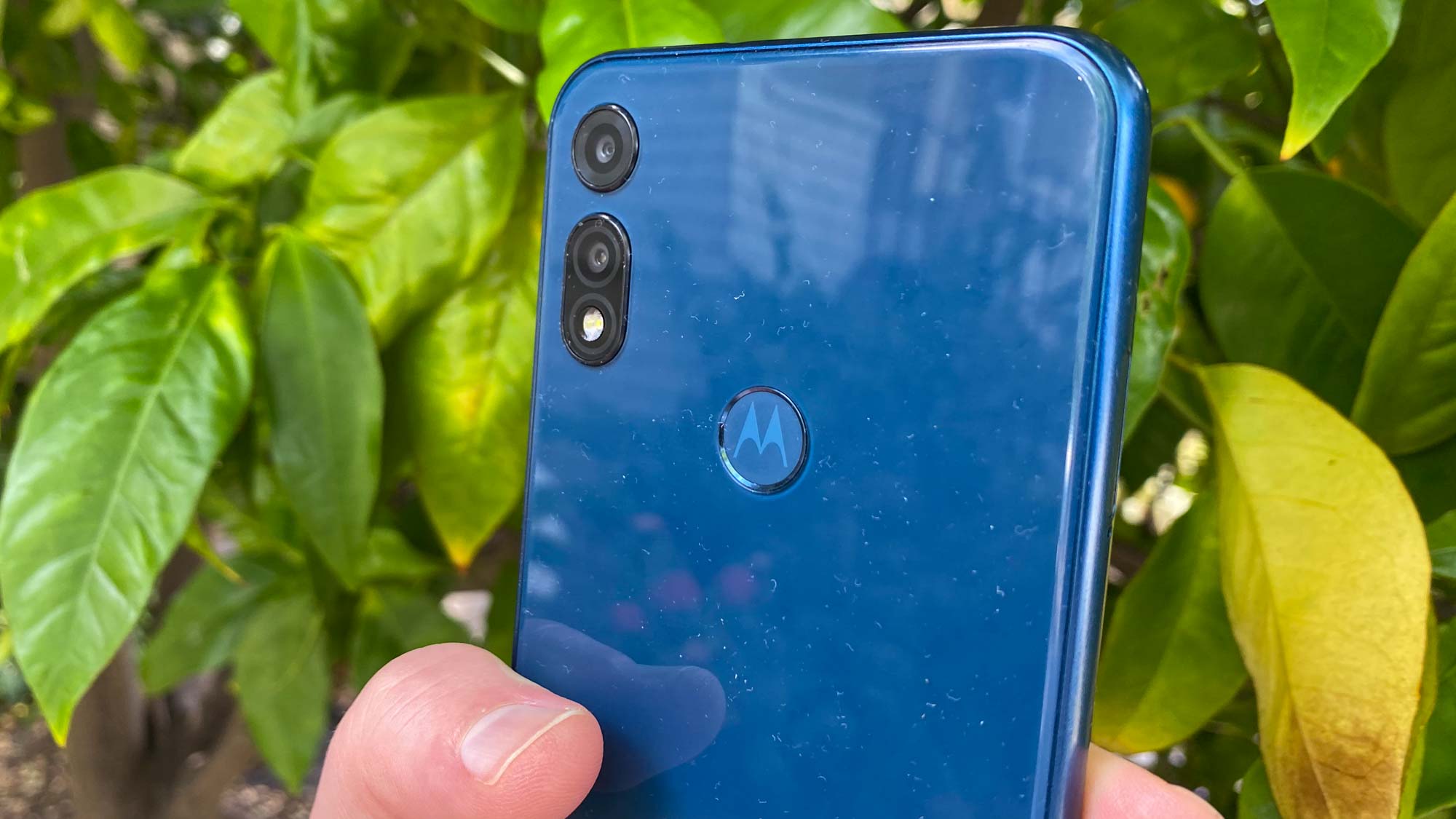
Moto E review: Display
The Moto E's 6.2-inch HD+ display is a bit of a disappointment, and not because it's a LCD panel. That's the trade-off you make with cheaper phones. Instead, my problem with the display is that it's not very colorful or bright. Watching the trailer for 1917 via YouTube, I could make out George MacKay and Dean-Charles Chapman trudging their way across No Man's Land in broad daylight, but anytime the scene shifted indoors, details were lost in the shadows. I noticed the same effect with Raiders of the Lost Ark on Netflix, where Marian's bar in Nepal was an indistinct shadow. Viewing angles are non-existent so be prepared to watch videos head-on.
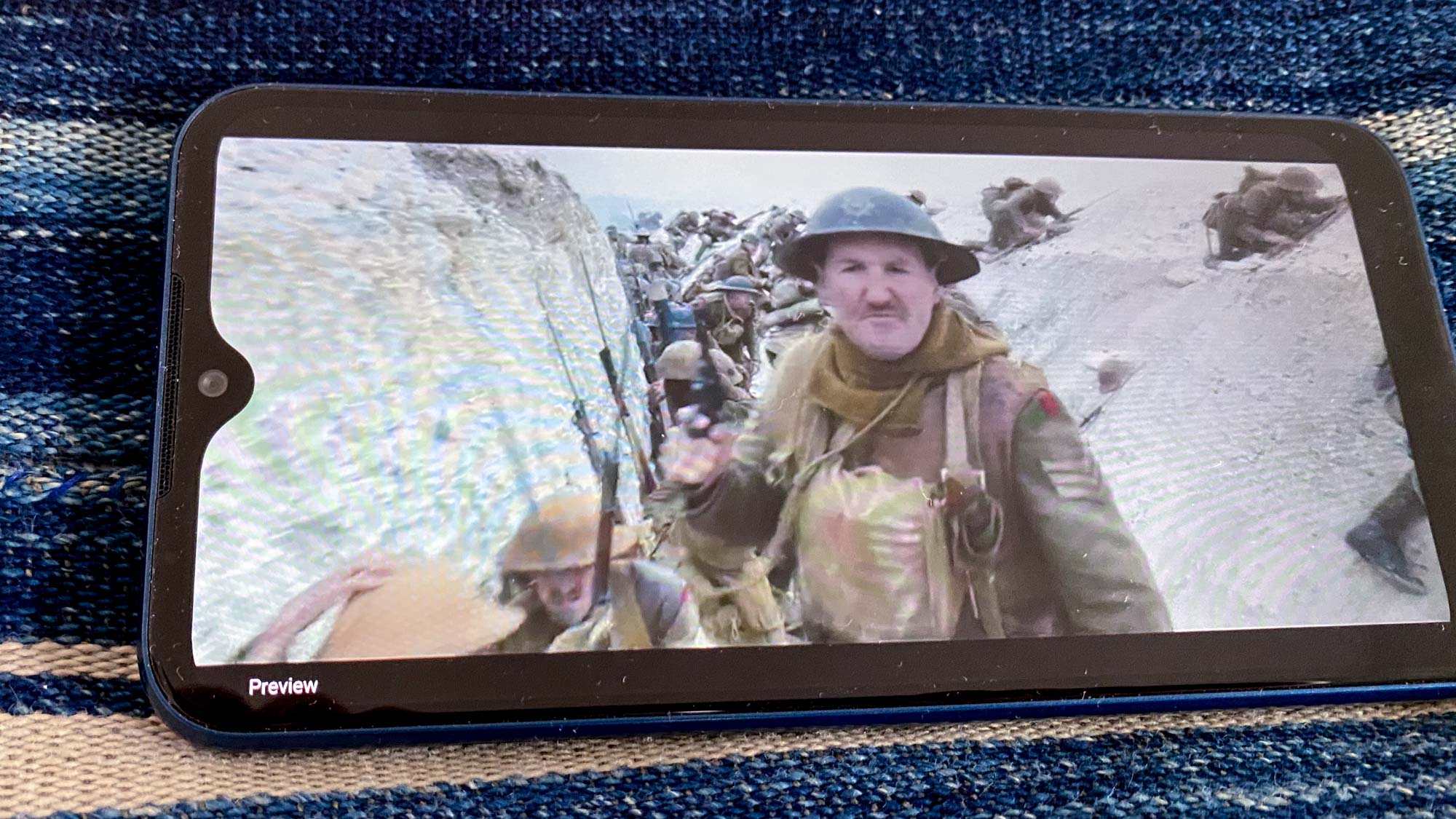
Test numbers from our lab back up my experience. The Moto E display captured 100.6% off the sRGB color spectrum. The TCL 10L, which puts more of a premium on the display, was more colorful at 122.1%. You'll also get more accurate colors with the TCL phone, as its Delta-E rating was 0.22 to 0.39 for the Moto E. (Numbers closer to zero are more accurate.)
The Moto E's screen problems are compounded by the fact that the display just isn't very bright. We measured a peak brightness of 388 nits with a light meter. That's below the 500 and 501 nit measurements we got with the Moto G Power and Moto G Stylus, respectively. You'll definitely have trouble making out the screen when you're outside on a sunny day.
Moto E review: Cameras
Lower-cost phones have made a habit of adding extra lenses as of late, so in a sense, the Moto E feels decidedly old-school. There's a 13-megapixel main shooter with an f/2.0 aperture, augmented by a 2MP depth sensor for better portrait shots. That hardware produces pretty competent photos, though the Moto E can struggle with lighting.
Take this photo of the big honkin' burrito I ate for lunch while testing the Moto E. The shot captured by the Moto E does a decent job recreating the colorful sauce topping the burrito, and you can even make out some of the beans and meat that make up the filling. But the light streaming in from a nearby window causes serious overexposure problems in the upper third of the photo. That didn’t happen with a shot I took with the TCL 10L.
Similarly, the Moto E also struggles when the lights are low, as we can see in a dimly-lit nighttime photograph of a cocktail perched on a bookshelf. The glass containing my Rusty Nail blends into the background, and the titles of some of the cookbooks appear fuzzy and out of focus, as if the Moto E's aperture struggled to let in enough ambient light. The outline of the cocktail glass is much more distinctive in the TCL 10L's shot, and the text on the book covers is sharper, too.
Outside in bright sunshine, though, the Moto E fares much better. It accurately recreates the blue sky surrounding a movie theater marquee and it even manages to capture the details of the cinema's facade. The TCL 10L photo is much darker for some reason, with even the movie theater sign looking shadowy.
The Moto E's depth sensor really helps the budget phone shine when it comes to portrait photos. While the blur effect isn't in evidence on the left background of the Moto E's shot, my daughter really pops out of the frame, with the depth sensor handling her hair with ease. That same hair flummoxed the TCL 10L, which applied its blur effect to the edges of her hair on both the right and left side of her face. The Moto E's portrait shot is something you'd expect from a much more expensive phone.
Up front, the Moto features a 5MP selfie cam that's more than capable of producing decent self-portraits. There's really no differentiating the Moto E's shot from what the TCL 10L captured with its 16MP front camera, though I think the Moto E did a better job handling the sunlight breaking through the orange tree around me. Like many phones, the Moto E is a little too aggressive with smoothing out my face, but you can turn off the camera's beauty mode if you prefer.
Moto E review: Performance
With a Snapdragon 632 system-on-chip running the show, no one's going to mistake the Moto E for a performance powerhouse. And the 2GB of RAM included on the phone won't really help you jump from app to app with relative ease.
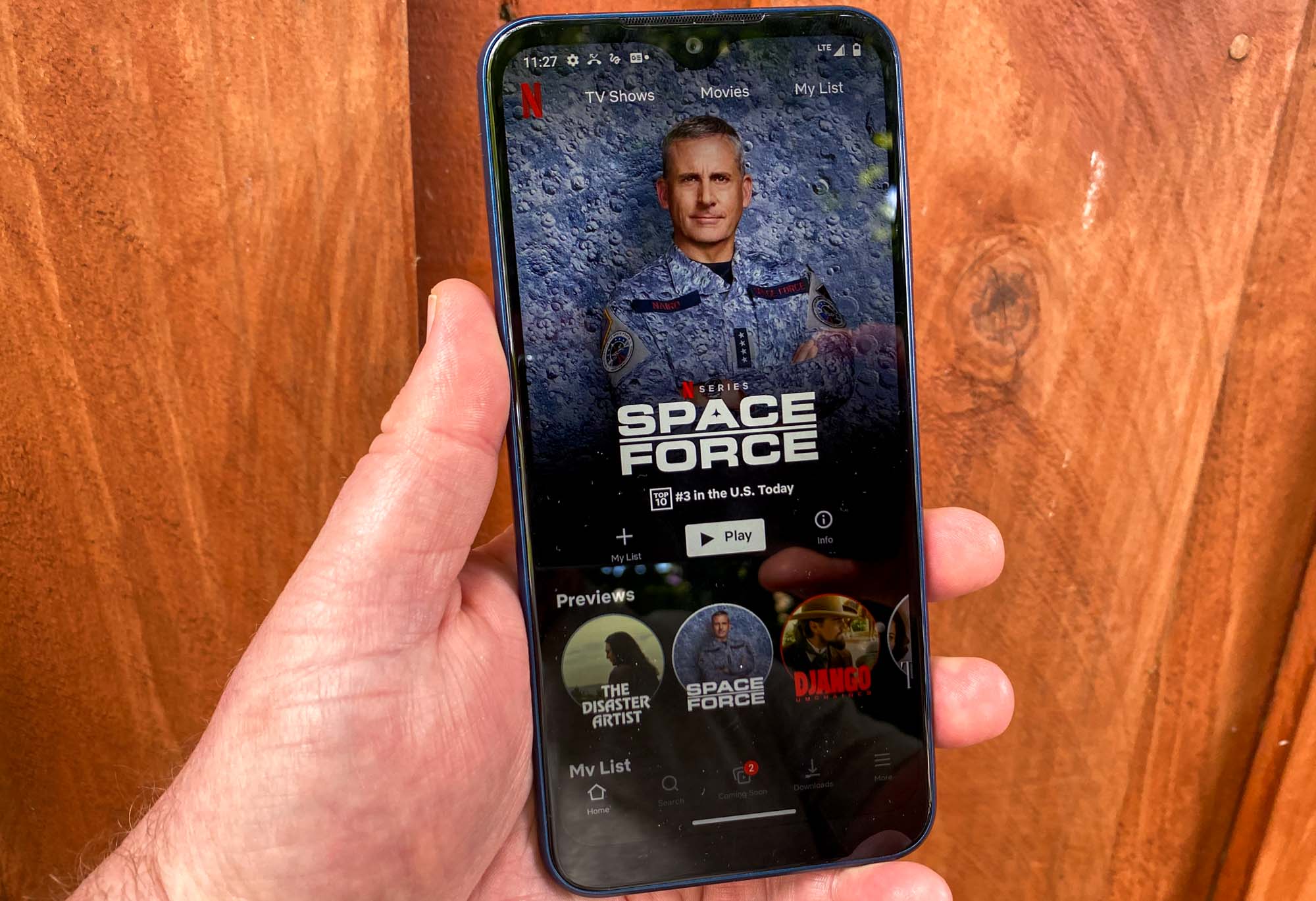
Unfortunately, we can't really tell you how the Moto E compares to other phones, as the phone can't currently install the Geekbench 5 test for measuring general performance. We were able to run 3DMark's Sling Shot Open GL test to measure graphics performance, however, and the results don't put the Moto in a flattering light. The Moto turned in a score of 949, which was well behind the results of the Moto G Power (1,734), Moto G Fast (1,769) and TCL 10L (1,747). Those three phones all use a Snapdragon 665 chipset, which is certainly a decent piece of silicon but not something that's going to blow away other handsets.
I saw that performance gap first-hand when using the Moto E. PUBG Mobile ran on this budget handset, but with noticeable hiccups and dropped frames. The graphics weren't particularly well rendered either. PUBG is a demanding game, but I didn't run into these problems when testing the Moto G Power or TCL 10L.
I also noticed slight lag when switching between apps on the Moto E. Essentially, it's a phone that can handle basic tasks, but forget about running graphically intense games or anything that requires a lot of processing power.
Moto E review: Battery life
The Moto E makes a better showing when it comes to battery life, as the phone made the most of its comparatively modest 3,350 mAh power pack. That allowed the Moto E to hold out for 10 hours and 14 minutes on our battery test, in which we have phones surf the web continuously over T-Mobile's LTE network until they run out of power.
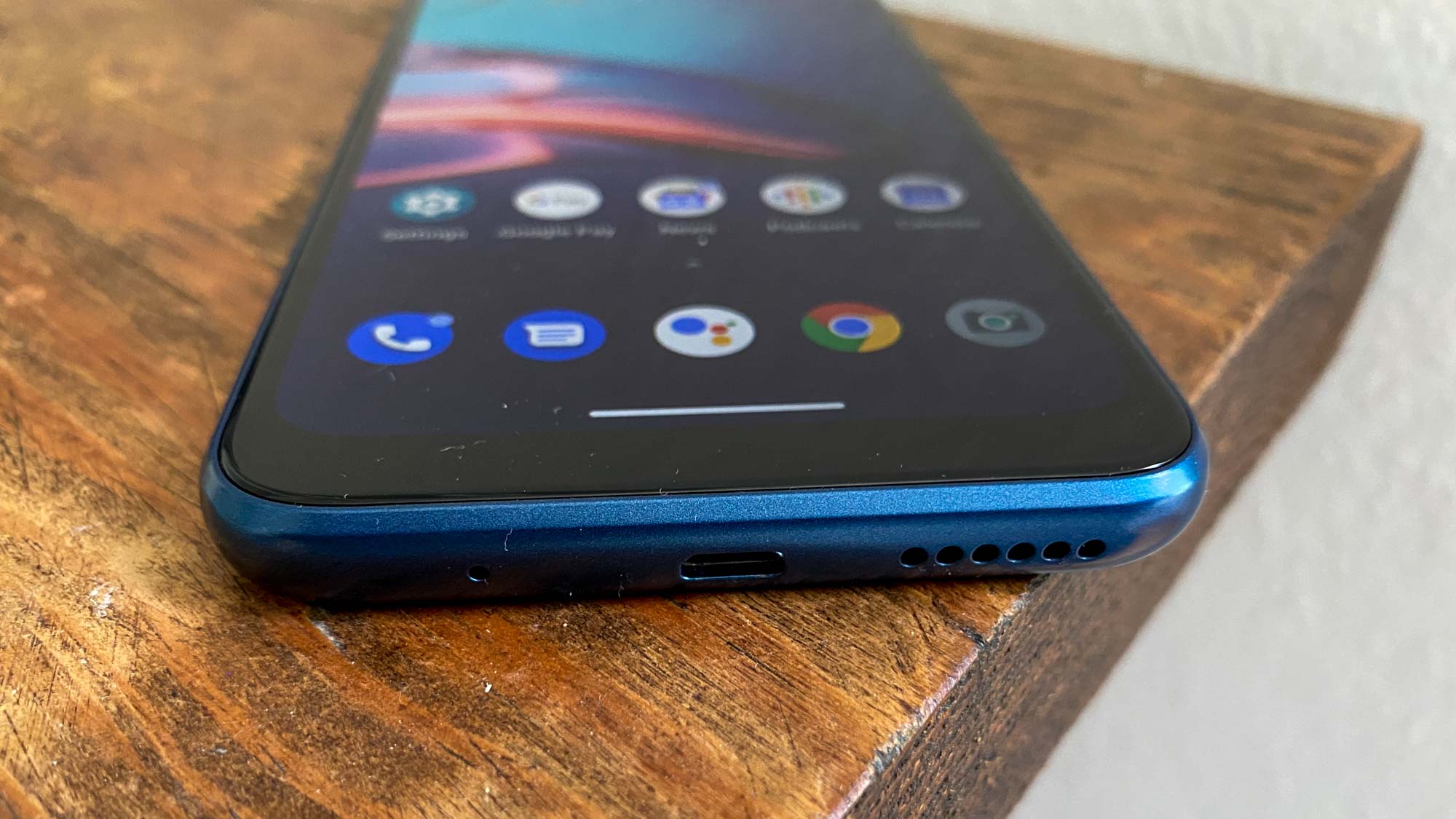
By topping the 10 hour mark, the Moto E finishes slightly ahead of the average time for smartphones. Still, it's no match for other recent Motorola handsets, which benefit from bigger batteries. The Moto G Stylus and its 4,000 mAh lasted 12 hours and 14 minutes, while the Moto G Power used a massive 5,000 mAh battery to endure for more than 16 hours. Those phones only cost $100 to $150 more than the Moto E and made our best phone battery life list.
Don't expect a quick recharge for the Moto E. After half-an-hour of recharging the drained phone with the included charger, the Moto E was only up to 18%. That's well off the pace set by the Moto G Stylus (29%), which is hardly a speed demon when it comes to recharging.
Moto E review: Software and special features
The Moto E runs Android 10, the latest version of Google's mobile OS. And that's all it may ever run, as Motorola told us it has no plans to do software updates beyond security updates for the phone. That's how it is for low-cost Android phones, but it's still something you should be aware of when deciding which phone to get.
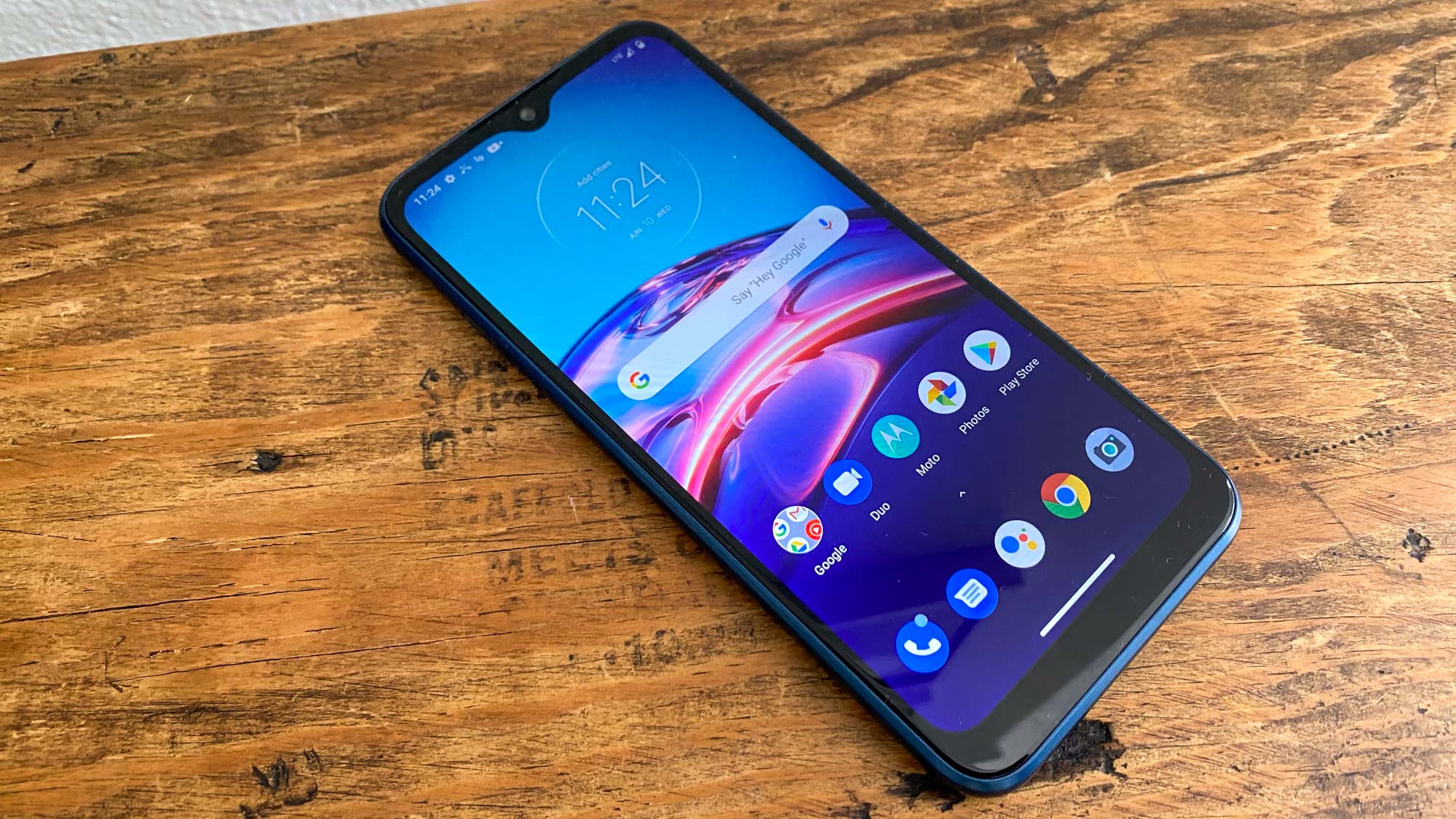
Otherwise, the Moto E features Motorola's usually light hand with Android, in which the software experience is pretty close to what you'd get with the stock OS. The few tweaks that Motorola makes are helpful Moto actions such as turning on the phone's flashlight by making two quick chopping motions or placing three fingers on the display to take a screenshot. My favorite Moto Action — launching the camera with a twist of the wrist — doesn't appear to be supported here.
The Moto E's fingerprint reader is easy to set up, and the sensor's location on the back of the phone, well away from the camera lenses, is easy to find. I never had any problem unlocking the Moto E, and it's good to see a polished security feature on such an inexpensive phone.
Moto E review: Verdict
If you don't want to spend that much money on your next phone, our Moto E review confirms that this latest Motorola release is a capable low-cost option. Just be prepared for lackluster performance and a display that doesn't wow — compromises that budget phone buyers are willing to make all the time.
The problem is, you really don't have to make these sacrifices if you're willing to pay a bit more, and you can still buy a Motorola phone in the process. The Moto G Fast and Moto G Power are both better phones than the Moto E, offering better performance, longer battery life (much longer in the Power's case) and better bang for the buck. They also cost only $50 to $100 more depending on the model.
Still, in this economy, even paying a little extra is a big ask. In that sense then, the Moto E will satisfy people who've stretched their dollars just about as far as they can go. At least they'll get decent battery life and much better cameras than a budget phone usually delivers with the Moto E.
Philip Michaels is a Managing Editor at Tom's Guide. He's been covering personal technology since 1999 and was in the building when Steve Jobs showed off the iPhone for the first time. He's been evaluating smartphones since that first iPhone debuted in 2007, and he's been following phone carriers and smartphone plans since 2015. He has strong opinions about Apple, the Oakland Athletics, old movies and proper butchery techniques. Follow him at @PhilipMichaels.
